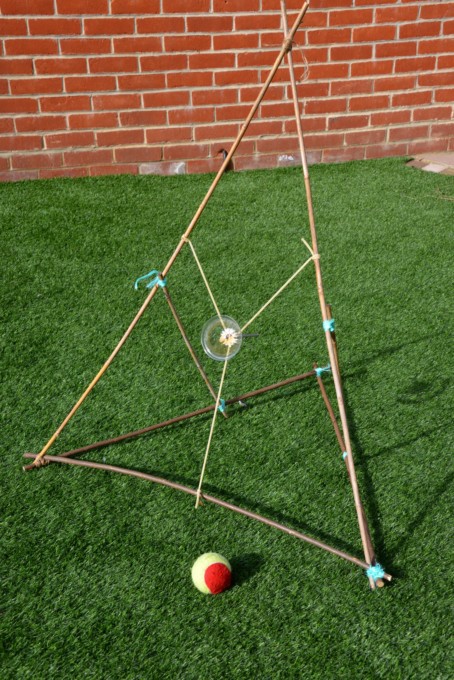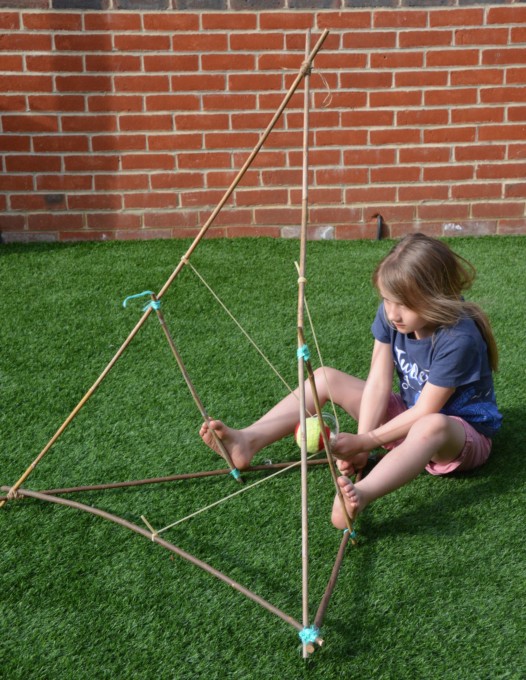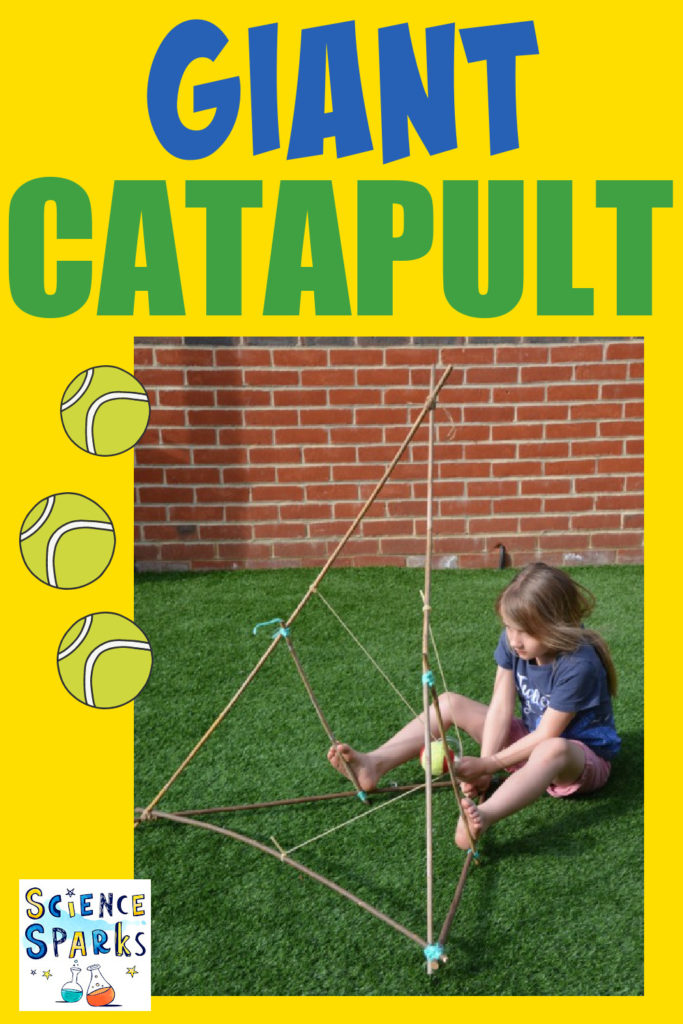
We’ve made many different mini catapults before, but this was our first attempt at a large version. We had SO much fun with our giant catapult, inspiring many different investigation opportunities.
You can use balls of different sizes and measure how far they travel or how high they go. Another idea is to dip balls in paint and create a piece of catapult art. You can also use the paint to help measure where the balls land!
This is a great activity for learning about forces and different types of energy.
A catapult is a device used to launch a projectile ( in this case a tennis ball ) a large distance.
Five long sticks
Two smaller sticks
Different size and shape balls to test
A small plastic container – we used a plastic Starbucks Frappuccino lid!

Build a frame using the sticks and string.
Cut three pieces of catapult elastic and attach them evenly around a plastic container.
As shown above, attach the other ends of the elastic to the base and sides of the catapult structure.

Test your catapult!
Try using different-sized balls to investigate which travel the furthest.
Construct a bigger and smaller catapult to investigate whether the size of the catapult affects how far the balls travel.
How can I measure the distance the balls travel?
Which conditions should be kept the same?
Does the size of the catapult affect the distance a ball travels?
If a less stretchy elastic is used, do the balls travel as far?
How can the catapult design be improved?
Try one of my easy football themed STEM challenges.
If you enjoyed this activity, you might like my other sport themed science investigations.

Contains Affiliate Links
Last Updated on June 25, 2024 by Emma Vanstone
Science Sparks ( Wild Sparks Enterprises Ltd ) are not liable for the actions of activity of any person who uses the information in this resource or in any of the suggested further resources. Science Sparks assume no liability with regard to injuries or damage to property that may occur as a result of using the information and carrying out the practical activities contained in this resource or in any of the suggested further resources.
These activities are designed to be carried out by children working with a parent, guardian or other appropriate adult. The adult involved is fully responsible for ensuring that the activities are carried out safely.